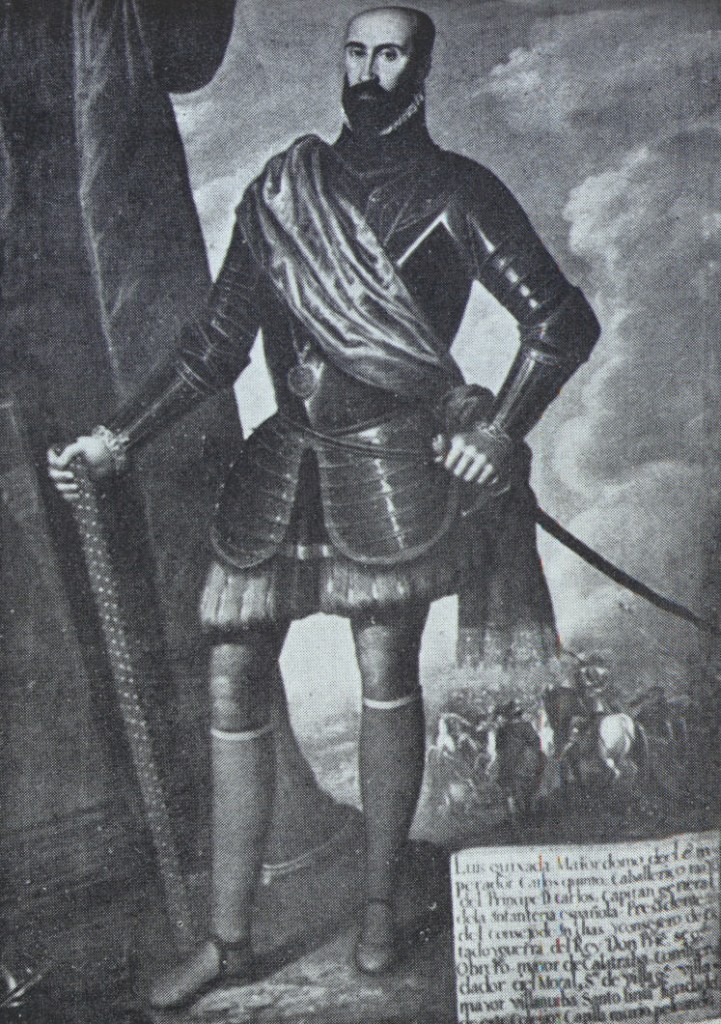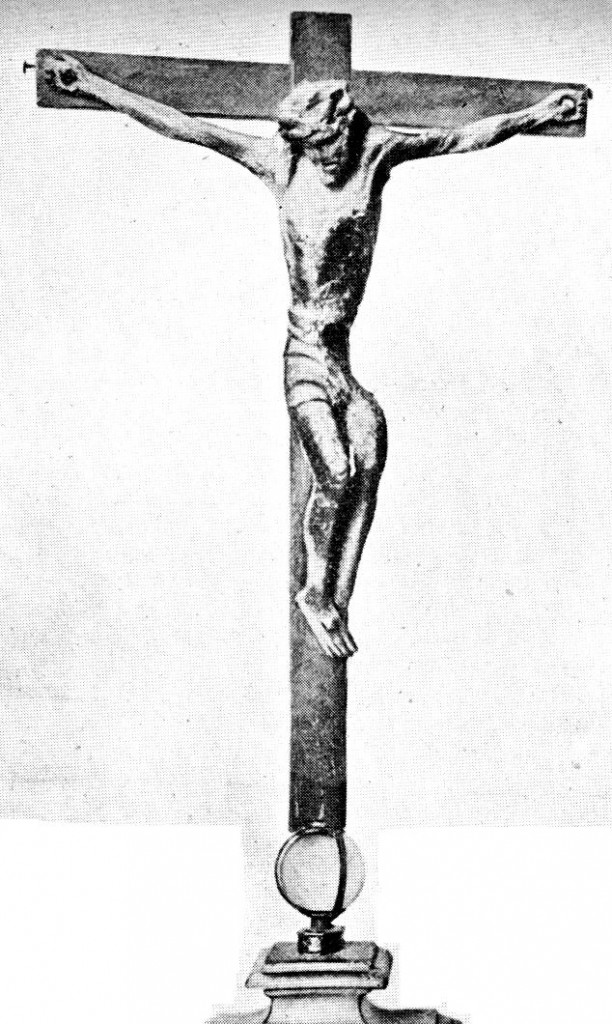The presence of Jeromín [Don John of Austria] in Villagarcia brought a ray of joy to the somber castle of the Quijadas, which reflected itself on its inhabitants. The merry laugh of a child always enlivens its surroundings, like the song of a bird in a gloomy wood, or a sunbeam piercing a dark cloud.
 The retinue of Doña Magdalena consisted of two duennas, Doña Elizabeth and Doña Petronilla de Alderete, both noble widows and first cousins….
The retinue of Doña Magdalena consisted of two duennas, Doña Elizabeth and Doña Petronilla de Alderete, both noble widows and first cousins….
Dona Magdalena usually ate with the household, according to the custom of the time, and Jeromín sat at her table, below the two duennas and above the squires. Every day she heard mass in her oratory with Jeromín at her side, but she did not give him either a cushion or a seat. On Sundays and feast days the noble dame went with all her household to the parish church of St. Peter, and heard high mass and a sermon from her stall in the chancel, as lady of the place and patroness of the church; as page of honor Jeromín stood at her side, between her stall and the bench of the duennas.
Similarly in the parlor, Doña Magdalena often sent for him to hear her duennas reading aloud, while she embroidered for the church, or spun for the poor, or sewed, or mended; but she never gave him more than a cushion, and this far from the dais on which she alone was seated.
Once a day, however, everything was changed, and she forgot the dignity of the great lady in the tenderness of the mother, coming into his room and waking him, dressing him, and combing his hair, he still half asleep with his pretty face in her lap, and his little hands in hers; and making him kneel at her side, she prayed and taught him to pray before a crucifix that she herself had given him.
Don Juan of Austria Painted by Alonso Sanchez Coello, located at the Art Institute of Chicago
This crucifix was and is, for it is still preserved in a reliquary at Villagarcia, an object of no great artistic merit, about a palm and a half high without the pedestal. This is its history. Years before the terrible rebellion in the Alpujarras, in one of the warning outbreaks of the Moors, Luis Quijada was skirmishing in the environs of Valencia, before embarking for Tunis. A suspected village was denounced to him, where the Moors were holding secret meetings, and there Quijada went, alone and disguised. He lodged in the house of the informer, and at night saw a bonfire blazing in a Moorish enclosure, which was surrounded by high walls.
He got there as best he could, and in the yard saw a strange sight. As many as sixty Moors were surrounding the fire, with gestures and mien of adoration, but in profound silence. Others entered, carrying, tied to a long reed, a figure of Christ, which they had stolen from a church. All the worship was changed to angry grimaces and shaking of fists, and taking the figure from its bearers, they threw it into the fire.
It is believed that this "Christ of the Battles" is the famous crucifix rescued by Luis Quijada from the Moors, but that this is not an absolute certainty.
The thud of the image falling into the flames roused Quijada from the horrible astonishment which paralyzed him; and without thinking, which is the way heroic deeds are done, he jumped into the yard, and without other weapon than his sword, set on the Moors, pushing some, upsetting others, wounding many, and making them all take to their heels.
When the coast was clear, he threw himself into the fire, among the flames and smoke and hot cinders, searching for the sacred image. He found it at last, half burned, and went out of the door, holding it aloft and calling down vengeance, his sword in his hand, his hair scorched, his clothes burnt, and his face and hands blackened and covered with blood. Doña Magdalena told Jeromín this story, and he asked the first time why they burnt the crucifix.
The child listened with his soul in his tear-filled eyes, his mouth contracted, his nostrils dilated, and his little fists clenched, with all the look of a Clodovic in miniature, furious not to have been able with his Gauls to have prevented the theft of the Christ. The lady understood the nobleness of this childish heart, which beat at the sound of that which was great, holy, and brave, and she looked at him for a moment in admiration, and then contented herself by kissing him.
But, by the next courier, she asked Quijada’s permission to place the child under the protection of the sacred image. This Quijada readily granted, and the crucifix was moved from the head of his bed, where it was, to Jeromín’s, who always kept it with him, calling it afterwards “His Christ of battles,” and he died kissing it, invoking its holy name.
Rev. Fr. Luis Coloma, The Story of Don John of Austria, trans. Lady Moreton, (New York: John Lane Company, 1912), pp. 22-25
Short Stories on Honor, Chivalry, and the World of Nobility—no. 156



No comments:
Post a Comment